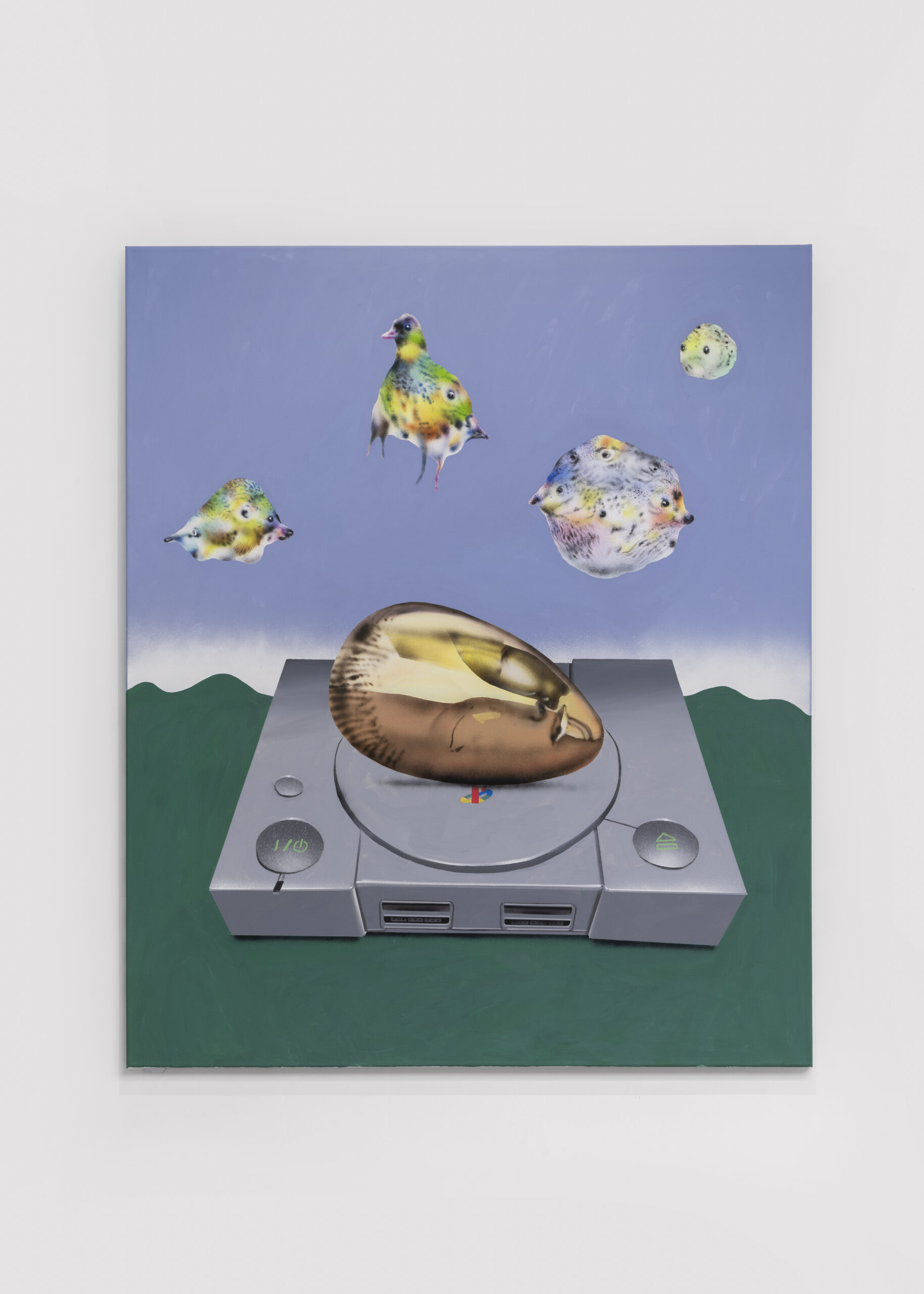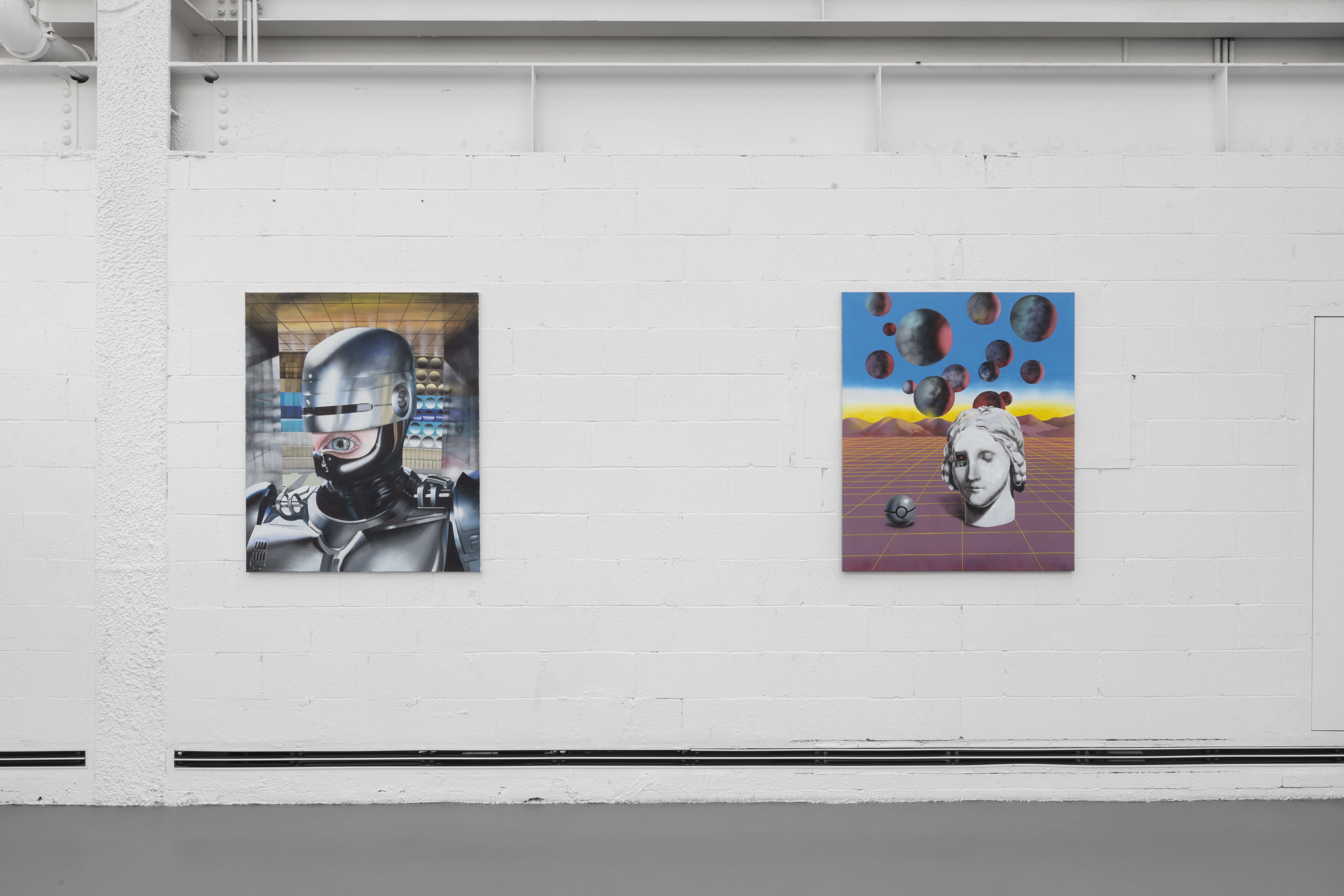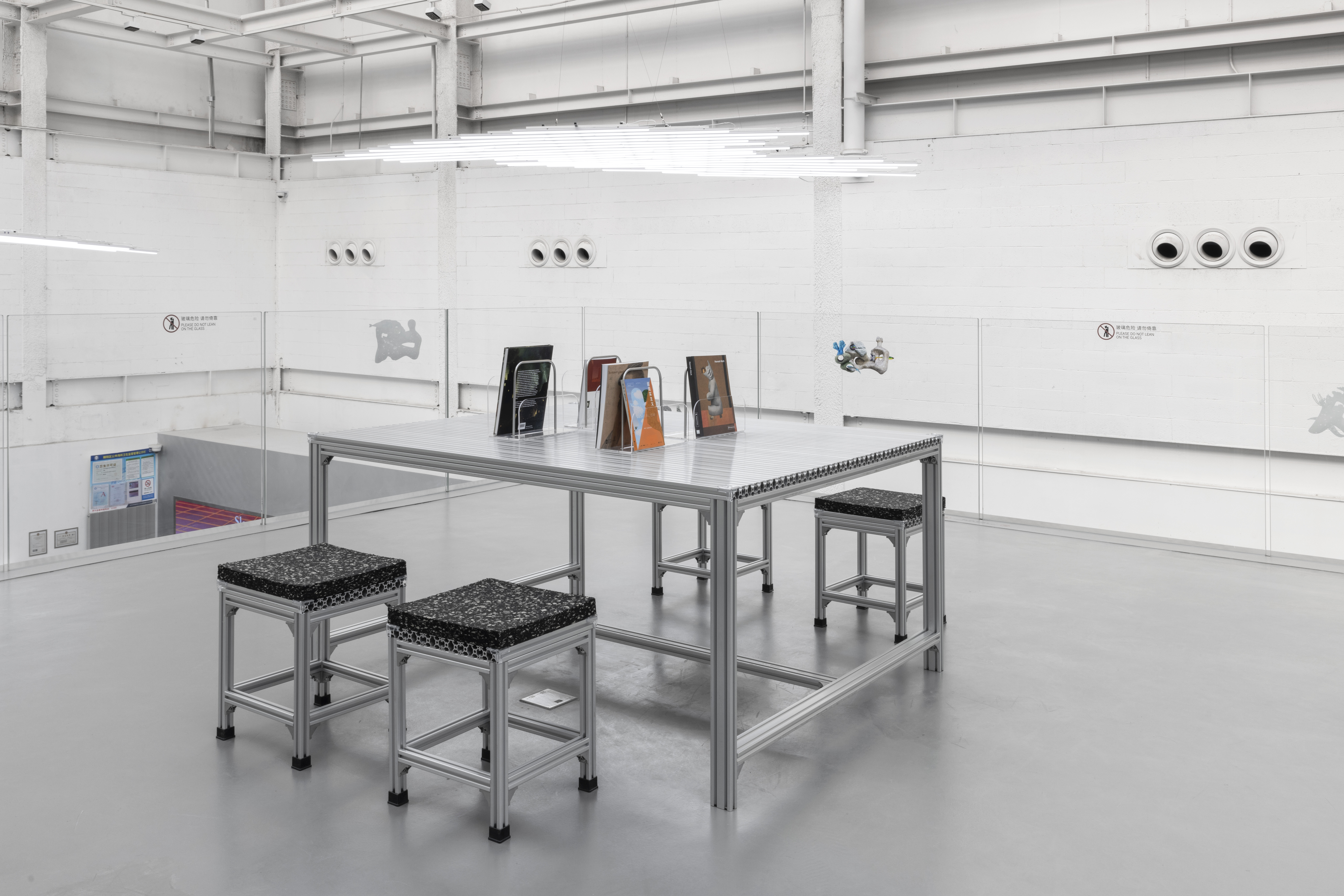| With ‘Sleeping Muse After Several Snoozes’, Keresztesi crafts a dreamlike yet incisive reflection on the digital age, weaving together elements of classical art, contemporary pop culture, and speculative futurism. Through these sixteen works, he constructs a vivid universe where historical echoes, technological anxieties, and surrealist humor converge. As we navigate this exhibition, we are invited to ponder not only the future Keresztesi envisions but also the rapidly shifting realities we already inhabit. Keresztesi’s creation is rooted in the rich soil of Dadaism and Surrealism and is deeply influenced by Surrealist masters such as René Magritte and Giorgio de Chirico. In his paintings, non-human subjects from classic masterpieces of art history are used across time and space; familiar visual elements are deformed, deconstructed, and replaced in a bizarre and obscure manner, juxtaposed with random elements, ultimately presenting a dreamlike and illogical spectacle. |
| In this way, Keresztesi attempts to dissolve artistic elitism: the Teletubbies recreate Henri Matisse’s La Danse; a robot-horse-snake hybrid replaces the horseback rider in Magritte’s paintings; and variations of the ‘Muse’ appear in multiple times on the edges, in the center, or hidden in distorted corners of the paintings. These threads continuously echo and mock humanity’s existing cultural achievements, and the step of stripping humanity away is achieved through redefinition. The artist’s recent works gradually lean towards futurism and post-human aesthetics. Fluid, three-dimensional metallic hues construct a utopia after the demise of humanity. Games, films, car parts, and sculptures—this human legacy of collective memory is integrated into a millennial monster aesthetic, eternally existing in a fictional world. Rebellion against human power is achieved through utter disregard, and the turbulent unease persists in Keresztesi’s creations. Living Creatures, mechanics, and other ambiguous inorganic substances constitute a terrifying scene: death is inevitable, and perhaps only machines are immortal. |


















